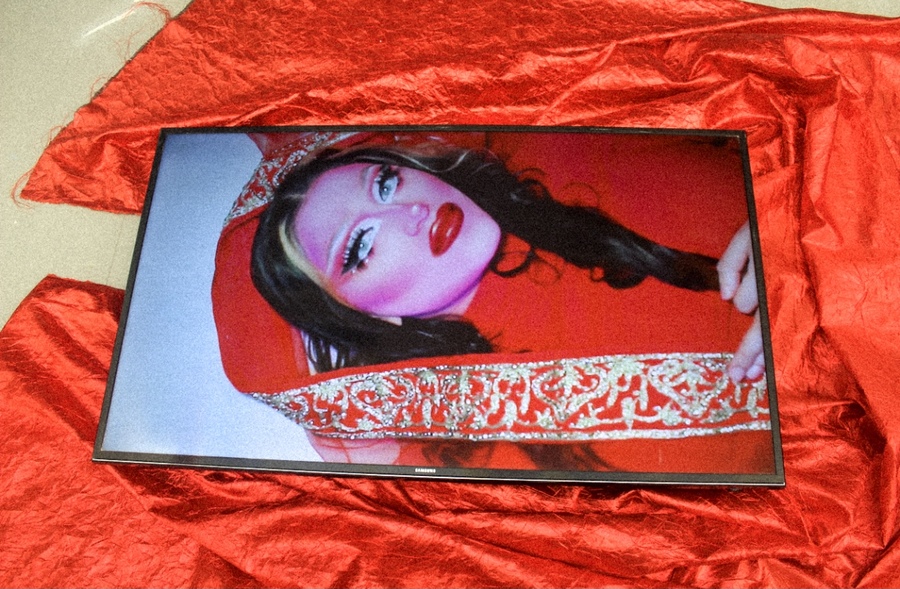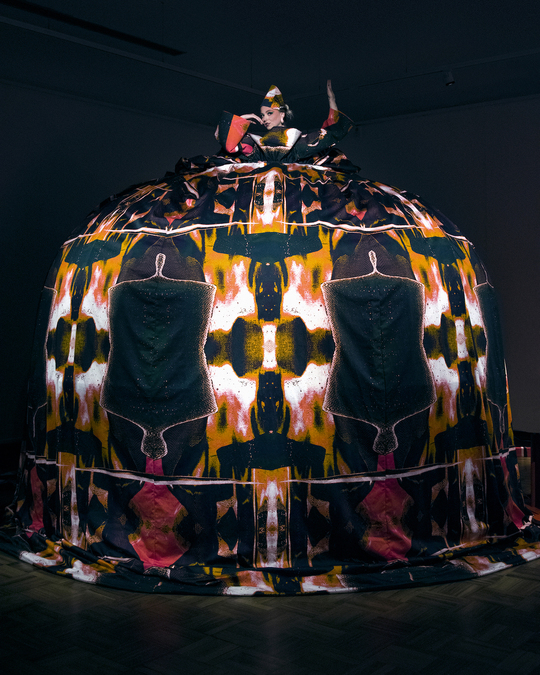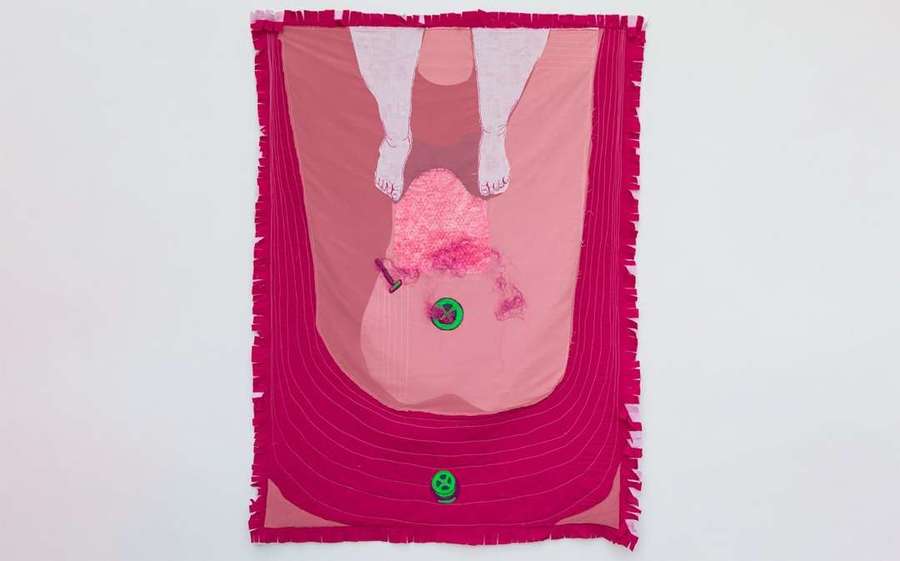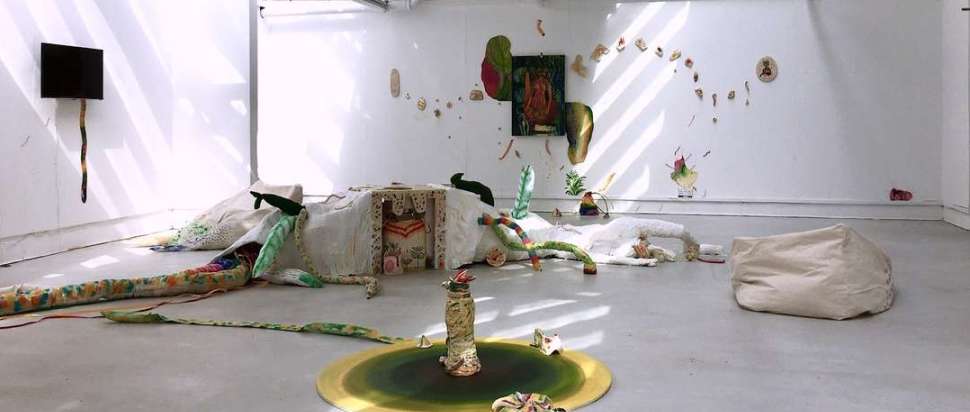Duncan of Jordanstone, Dundee Degree Show 2022: The review
This year's DJCAD graduates present a colourful and immersive degree show in Dundee
Stepping into the studios of Duncan of Jordanstone College of Art and Design for the first in-person graduate degree show since 2019, it’s a delight to find a cohort of students with a sharpened sense of the material world and our experiences of it. The result is an often colourful, lively show incorporating immersive and experiential elements that revel in the return of physical visitors.

Work from Farah Hussain's exhibition, SHAADI. Photo: Farah Hussain/ DJCAD
Mixed media artist Nathan Price presents a vivid collage brought to life in three dimensions. Referencing the layers of graffiti and detritus that make up the urban environment, and with nods to Keith Haring and Jean-Michel Basquiat, Price conveys the feeling of freedom and the buzz of city streets. The overwhelming sensory experience of city life also plays out in Farah Hussain’s surreal installation. Viewers are led down a dark corridor, which opens onto a vibrant club room, complete with checkerboard dancefloor and oversized pink soft sculpture head. It’s a joyful celebration of queer nightlife and the potential of queer spaces for subverting identity.
Marly Merle’s striking wearable landscape develops similar themes of transformation, imagining the power to transport oneself to an alternative reality through avant-garde costumes. In Digital Interaction Design, Jonathan Anderson’s Clubometer – a block made to be embedded in city streets, giving live updates about the busyness, vibe, and sweatiness of nearby nightclubs – also speaks to the welcome return of nightlife and communal experiences.

A costume from Nib Land by Marly Merle
Rachel Bride Ashton’s wonderfully inventive mixed-media installation playfully invites viewers to take part in rituals of the body, specifically the ‘monstrous feminine’ body she explores in ceramics, papier mâché sculpture, and film. The vulva of her sculpted squatting woman becomes a portal, with viewers compelled to lie on their backs underneath to see a film celebrating the power of birth. By bringing together human, animal, plant life and bacteria, Bride encourages us to embrace the non-human that makes up so much of our lives.
Bride’s interest in ceramics, textiles, and processes of labour is echoed elsewhere in the show. Complementing Bride’s celebration of birth, Eilidh Guthrie’s multimedia installation Forest Breathing explores the body’s return to the natural environment after death. Her pit-fired sculptures uncannily resemble tree limbs and chunks of charred flesh, a powerful reminder of our return to the earth after the body’s decomposition. Charlotte Maishman’s haunting house installation similarly stages a confrontation with mortality. Its skeletal form is made of porcelain, fastened together with steel bolts, and weighs the same as an average human body. It’s an eerie reminder of the body’s vulnerability and strength; the image of an empty house seems to symbolise the losses we’ve collectively experienced over the past few years.

Remnants by Rebecca Rodger
In the textiles department, Sandra Junele’s labour-intensive process transforms waste scraps of yarn into sculptural shapes that are then moulded into modernist modular wall panels. Rebecca Rodger’s turn to rug tufting in lockdown results in a fluid, abstract wall hanging, a work of queer craft that upturns boundaries between domestic and fine art forms. Joshua McCullough’s striking quilt pieces play with the intimate, affective qualities of the form while also reaching outwards, to open a space for sharing and support.
The panels narrate McCullough’s experience of a manic episode, using detailed embroidery and appliqué techniques to cover the fabric in religious iconography and personal scenes. Drawing on the Catholic confessional, the viewer is encouraged to pin a square to the quilt, with a comment on their own experiences of mental health struggles. This moving work emphasises many of the other students’ turn to forms of making and immersive experiences that welcome participation. This optimistic, surprising show serves as a timely reminder that so much of art’s meaning is made in the material interactions between artist, artwork, and audience.
Run ended; view more work by this year's DJCAD graduates at dundee.ac.uk/graduate-showcase
